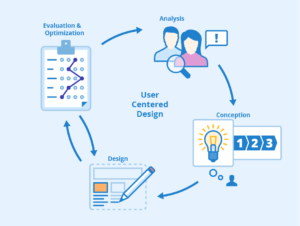ChatGPT’s Major Update: Now Seeing, Hearing, and Speaking

ChatGPT's Major Update: Now Seeing, Hearing, and Speaking
Introduction
Artificial intelligence has been evolving at an astonishing pace, and OpenAI’s ChatGPT has been at the forefront of these advancements. In its latest major update, ChatGPT has transcended text-based interactions and entered a new era where it can see, hear, and speak. This groundbreaking development opens up a world of possibilities for AI-driven applications, revolutionizing the way we interact with technology. In this blog post, we’ll explore the significance of this major update, its capabilities, and the potential implications for various industries.
The Evolution of ChatGPT
ChatGPT, based on the GPT-3.5 architecture, has been a powerful language model known for its ability to generate human-like text responses. It has been utilized in a wide range of applications, from customer support chatbots to content generation tools. However, its interactions were limited to text-based conversations until now.
Seeing with Vision Models
One of the most exciting aspects of ChatGPT’s major update is its newfound ability to “see” through vision models. It can process and interpret images, making it proficient in tasks such as image description, object recognition, and even understanding context from visual cues. This capability enhances its understanding of the world, enabling it to generate more contextually relevant responses.
Hearing with Audio Processing
ChatGPT’s transformation goes beyond visuals; it can now “hear” as well. It has been equipped with audio processing capabilities, allowing it to understand and generate responses based on audio inputs. This means it can engage in spoken conversations, transcribe spoken words, and even generate audio content. The potential applications for voice assistants, transcription services, and audio content creation are immense.
Speaking with Text-to-Speech
The ability to speak is the final piece of the puzzle. ChatGPT can now generate human-like speech through text-to-speech (TTS) technology. This means it can not only understand and respond to spoken language but also communicate vocally. The synthesized voice is remarkably natural, and it can be customized to suit different preferences and purposes. This development is a game-changer for voice assistants, virtual customer service agents, and any application where vocal communication is essential.
Potential Applications
The integration of vision, audio, and speech capabilities into ChatGPT opens up a multitude of potential applications across various industries:
- Virtual Assistants:
- ChatGPT can now power highly sophisticated virtual assistants that understand and respond to both text and voice commands. This can enhance user experiences across devices and platforms.
- Content Creation:
- Content creators can leverage ChatGPT to assist in generating not only written content but also audio and visual content. It can aid in creating podcasts, videos, and multimedia presentations.
- Accessibility:
- The new features can greatly benefit individuals with disabilities. ChatGPT can assist in translating text to speech, providing audio descriptions of visual content, and aiding in communication for those with speech impediments.
- Education:
- ChatGPT can be a valuable tool for personalized education. It can provide explanations, answer questions, and even read educational materials aloud, making learning more engaging and accessible.
- Healthcare:
- In healthcare, ChatGPT can assist in medical transcription, patient communication, and even remote diagnostics by interpreting medical images and providing spoken explanations.
- Entertainment:
- The entertainment industry can benefit from ChatGPT’s ability to generate interactive, voice-driven narratives and immersive experiences.
Ethical Considerations
With these advancements come important ethical considerations, such as privacy, consent, and responsible AI usage. It’s crucial to ensure that AI applications built on ChatGPT’s capabilities are used ethically and transparently, with a focus on safeguarding user data and respecting user rights.
Conclusion
OpenAI’s ChatGPT has taken a giant leap forward with its ability to see, hear, and speak. This transformative update has the potential to revolutionize how we interact with AI-driven applications, making them more intuitive, accessible, and versatile than ever before. As we embrace this new era of AI, it’s essential to harness its power responsibly and ethically, unlocking the full potential of AI while respecting privacy and human values. The future of AI-driven technology is here, and it promises to be both exciting and transformative.
For More Related Articles Browse Our Website Blogster.pk
For social Connection You can also Visit and follow our Social media Platforms
Facebook , Instagram, Linkedin, Pinterest, Quora, Twitter, Youtube.





